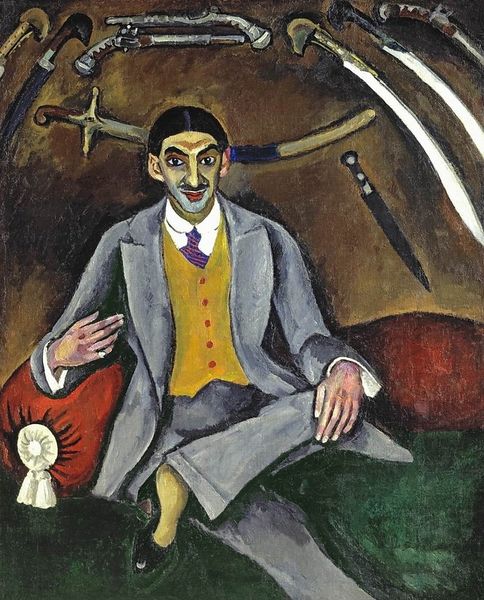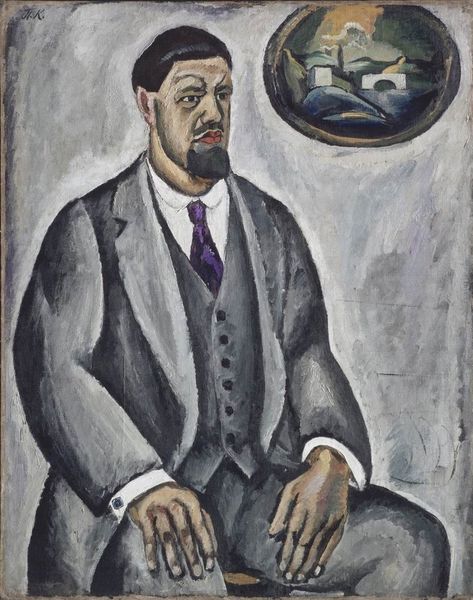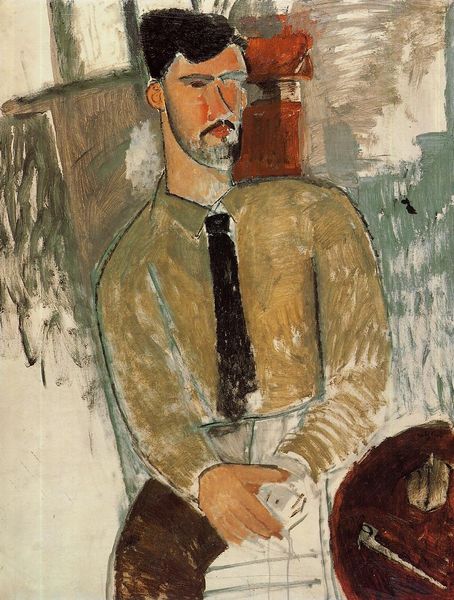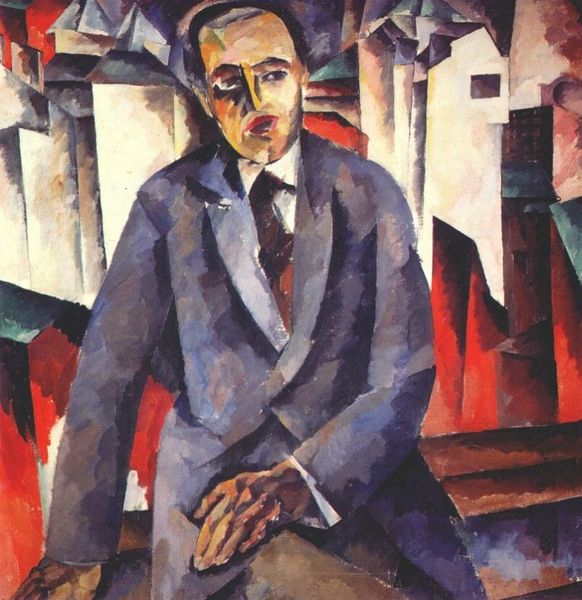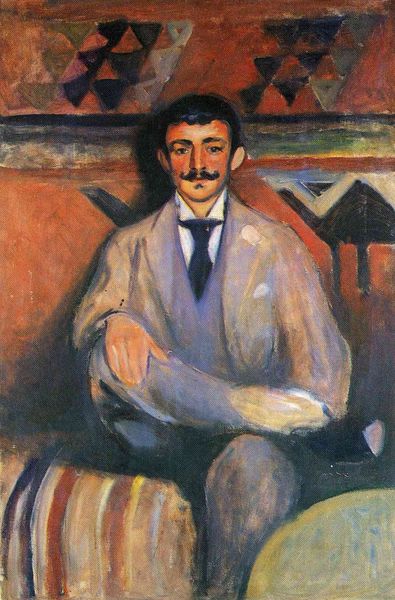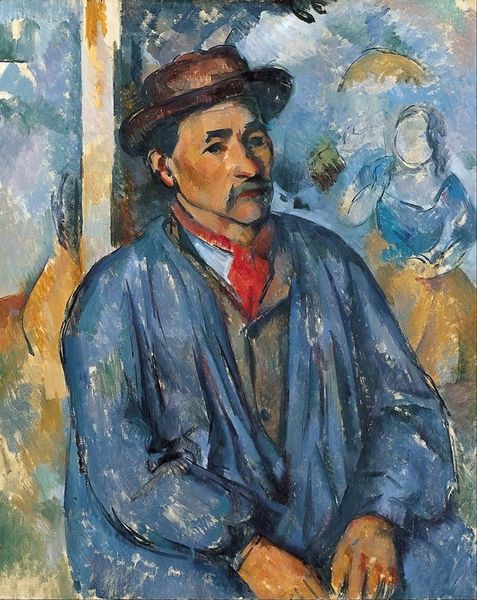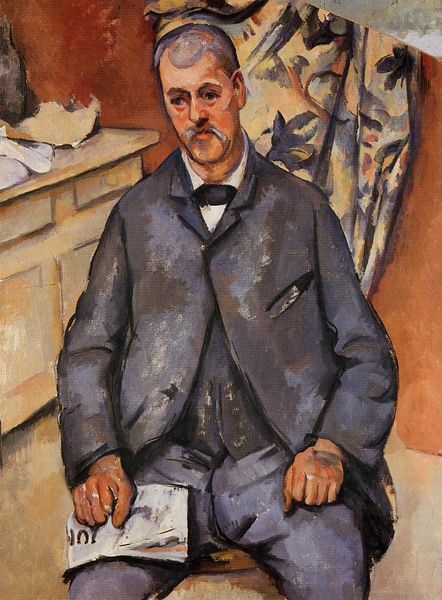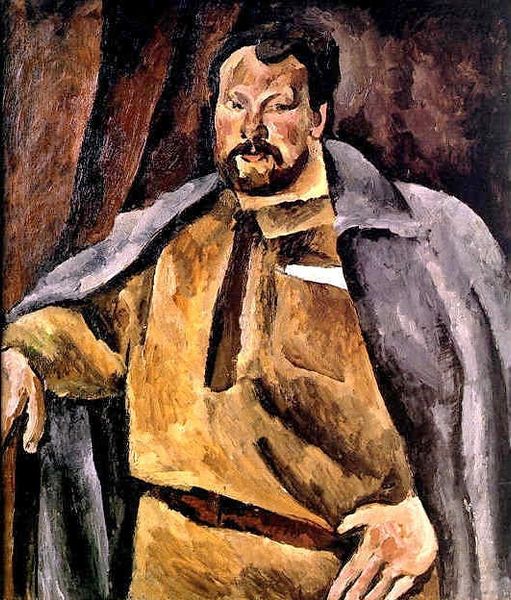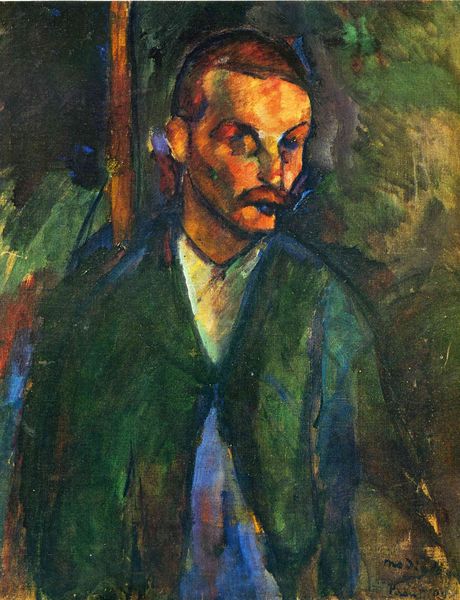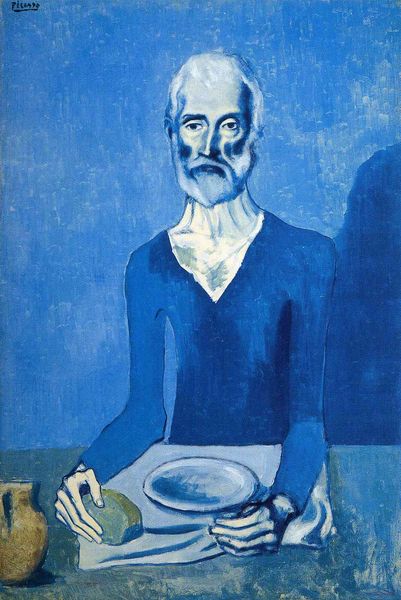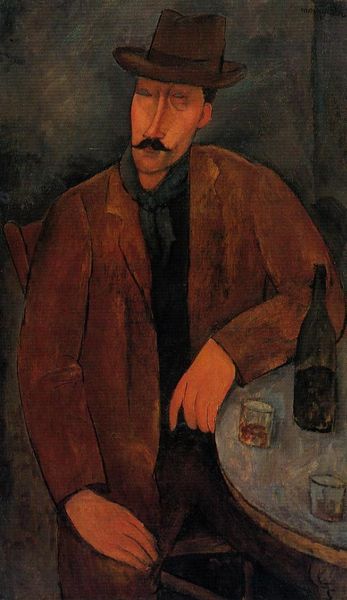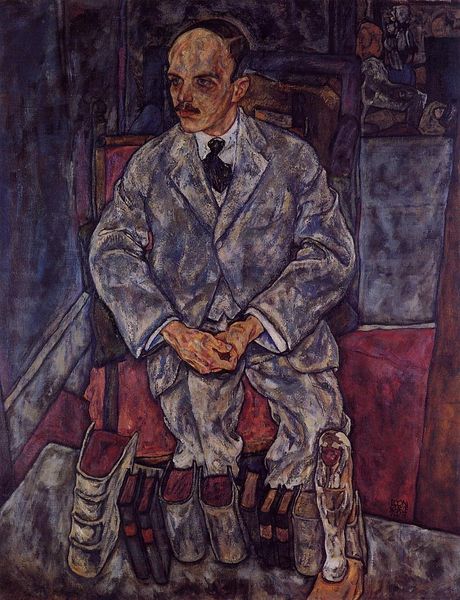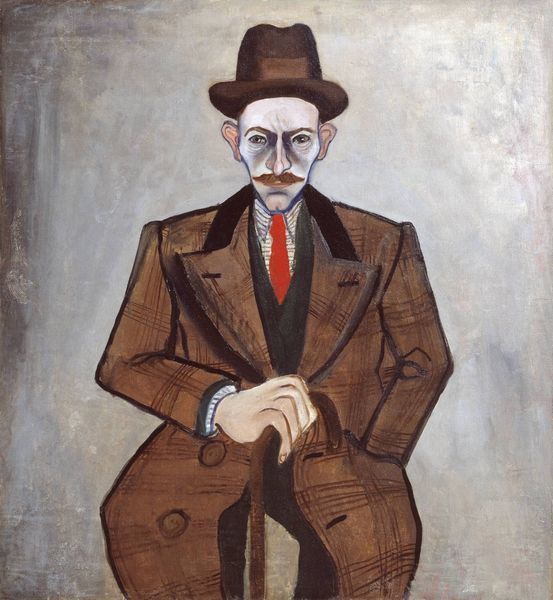
painting, oil-paint
#
portrait
#
narrative-art
#
painting
#
oil-paint
#
landscape
#
figuration
#
oil painting
#
group-portraits
#
expressionism
#
portrait art
#
expressionist
Dimensions: 135 x 115 cm
Copyright: Public domain US
Curator: What strikes me most is the weight of the palette. So muted, yet emotionally…stirring. Editor: Indeed. Before us we have Pyotr Konchalovsky’s “Portrait of the Artist Vladimir Rozhdestvensky,” painted in 1912 using oil on canvas. Immediately evident is the portrait's break with traditional mimetic representation in favor of simplified forms and a flattened perspective. Curator: Flattened yes, but not devoid of depth. Look at the landscape peeking out behind Rozhdestvensky’s shoulder – buildings, a sort of church dome…almost dreamlike. And his gaze! Direct, a touch melancholic perhaps? It's like Konchalovsky captured not just a likeness, but a mood. I see hints of Expressionism...but that's my emotional side taking over, I admit. Editor: Not an unreasonable assessment. The angularity of the composition—especially in rendering the figure’s clothing and the landscape—contributes to that overall sense of unease associated with Expressionist aesthetics. And the subject’s face exhibits an almost cubist quality, don't you think? Note the planes of his face, how they are sculpted by light and shadow into distinct geometrical shapes. Curator: Right! He seems almost built from geometric blocks, like a sculpture rather than a conventional portrait. And the dogs – their presence, oddly spectral in the background… adding an eerie sense of watchful companionship. Perhaps they signify something about Rozhdestvensky's inner world? Or are simply…well, dogs? Editor: Interesting speculation. Structurally, I’d argue the dogs mirror the rigidity of the figure’s pose and create an overall asymmetrical yet balanced composition that leads the eye from the foreground directly into the atmospheric background. See how Konchalovsky has repeated shapes? It unifies what otherwise would become competing images. Curator: I suppose that art history background explains why you always look beyond what is directly on display to reveal patterns, repetitions, or the formal essence! It is a striking piece. A study in shape and colour which then conjures such complex thoughts for both of us. Editor: It reveals how, despite a century elapsing since it was completed, this artwork manages to generate discussions and provide continued interpretive depth.
Comments
No comments
Be the first to comment and join the conversation on the ultimate creative platform.
